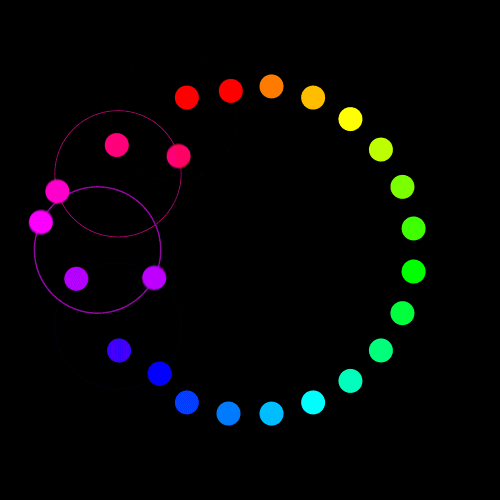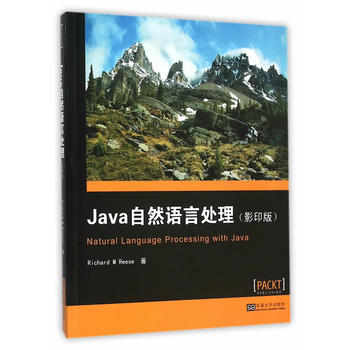简介
自然语言处理(NLP)是应用开发中的重要领域之 一,其与解决当代问题的相关性将与日俱增。对于它 通过NLP任务支持实现的自然语言可访问应用的需求 已有显*增长。里斯编写的《Java自然语言处理(影 印版)(英文版)》将运用诸如全文检索、合适名称识 别、聚类、标签、信息抽取和摘要等手段展示如何自 动组织文本。本书介绍了各种NLP概念,即便你没有 任何统计学自然语言处理背景也能理解。 自然语言处理(NLP)是应用开发中的重要领域之 一,其与解决当代问题的相关性将与日俱增。对于它 通过NLP任务支持实现的自然语言可访问应用的需求 已有显*增长。里斯编写的《Java自然语言处理(影 印版)(英文版)》将运用诸如全文检索、合适名称识 别、聚类、标签、信息抽取和摘要等手段展示如何自 动组织文本。本书介绍了各种NLP概念,即便你没有 任何统计学自然语言处理背景也能理解。
目录
Preface
Chapter 1: Introduction to NLP
What is NLP?
Why use NLP?
Why is NLP so hard?
Survey of NLP tools
Apache OpenNLP
Stanford NLP
LingPipe
GATE
UIMA
Overview of text processing tasks
Finding parts of text
Finding sentences
Finding people and things
Detecting Parts of Speech
Classifying text and documents
Extracting relationships
Using combined approaches
Understanding NLP models
Identifying the task
Selecting a model
Building and training the model
Verifying the model
Using the model
Preparing data
Summary
Chapter 2: Finding Parts of Text
Understanding the parts of text
What is tokenization?
Uses of tokenizers
Simple Java tokenizers
Using the Scanner class
Specifying the delimiter
Using the split method
Using the Breaklterator class
Using the StreamTokenizer class
Using the StringTokenizer class
Performance considerations with java core tokenization
NLP tokenizer APIs
Using the OpenNLPTokenizer class
Using the SimpleTokenizer class
Using the WhitespaceTokenizer class
Using the TokenizerME class
Using the Stanford tokenizer
Using the PTBTokenizer class
Using the DocumentPreprocessor class
Using a pipeline
Using LingPipe tokenizers
Training a tokenizer to find parts of text
Comparing tokenizers
Understanding normalization
Converting to lowercase
Removing stopwords
Creating a StopWords class
Using LingPipe to remove stopwords
Using stemming
Using the Porter Stemmer
Stemming with LingPipe
Using lemmatization
Using the StanfordLemmatizer class
Using lemmatization in OpenNLP
Normalizing using a pipeline
Summary
Chapter 3: Finding Sentences
The SBD process
What makes SBD difficult?
Understanding SBD rules of LingPipe's
HeuristicSentenceModel class
Simple Java SBDs
Using regular expressions
Using the Breaklterator class
Using NLP APIs
Using OpenNLP
Using the SentenceDetectorME class
Using the sentPosDetect method
Using the Stanford API
Using the PTBTokenizer class
Using the DocumentPreprocessor class
Using the StanfordCoreNLP class
Using LingPipe
Using the IndoEuropeanSentenceModel class
Using the SentenceChunker class
Using the MedlineSentenceModel class
Training a Sentence Detector model
Using the Trained model
Evaluating the model using the SentenceDetectorEvaluator class
Summary
Chapter 4: Finding People and Things
Why NER is difficult?
Techniques for name recognition
Lists and regular expressions
Statistical classifiers
Using regular expressions for NER
Using Java's regular expressions to find entities
Using LingPipe's RegExChunker class
Using NLP APIs
Using OpenNLP for NER
Determining the accuracy of the entity
Using other entity types
Processing multiple entity types
Using the Stanford API for NER
Using LingPipe for NER
Using LingPipe's name entity models
Using the ExactDictionaryChunker class
Training a model
Evaluating a model
Summary
Chapter 5: Detecting Parts of Speech
The tagging process
Importance of POS taggers
What makes POS difficult?
Using the NLP APIs
Using OpenNLP POS taggers
Using the OpenNLP POSTaggerME class for POS taggers
Using OpenNLP chunking
Using the POSDictionary class
Using Stanford POS taggers
Using Stanford MaxentTagger
Using the MaxentTagger class to tag textese
Using Stanford pipeline to perform tagging
Using LingPipe POS taggers
Using the HmmDecoder class with BestFirst tags
Using the HmmDecoder class with NBest tags
Determining tag confidence with the HmmDecoder class
Training the OpenNLP POSModel
Summary
Chapter 6: Classi ify_~g_ Texts and Documents
How classification is used
Understanding sentiment analysis
Text classifying techniques
Using APIs to classify text
Using OpenNLP
Training an OpenNLP classification model
Using DocumentCategorizerME to classify text
Using Stanford API
Using the ColumnDataClassifier class for classification
Using the Stanford pipeline to perform sentiment analysis
Using LingPipe to classify text
Training text using the Classified class
Using other training categories
Classifying text using LingPipe
Sentiment analysis using LingPipe
Language identification using LingPipe
Summary
Chapter 7: Using Parser to Extract Relationships
Relationship types
Understanding parse trees
Using extracted relationships
Extracting relationships
Using NLP APIs
Using OpenNLP
Using the Stanford API
Using the LexicalizedParser class
Using the TreePrint class
Finding word dependencies using the GrammaticalStructure class
Finding coreference resolution entities
Extracting relationships for a question-answer system
Finding the word dependencies
Determining the question type
Searching for the answer
Summary
Chapter 8: Combined Approaches
Preparing data
Using Boilerpipe to extract text from HTML
Using POI to extract text from Word documents
Using PDFBox to extract text from PDF documents
Pipelines
Using the Stanford pipeline
Using multiple cores with the Stanford pipeline
Creating a pipeline to search text
Summary
Index
Chapter 1: Introduction to NLP
What is NLP?
Why use NLP?
Why is NLP so hard?
Survey of NLP tools
Apache OpenNLP
Stanford NLP
LingPipe
GATE
UIMA
Overview of text processing tasks
Finding parts of text
Finding sentences
Finding people and things
Detecting Parts of Speech
Classifying text and documents
Extracting relationships
Using combined approaches
Understanding NLP models
Identifying the task
Selecting a model
Building and training the model
Verifying the model
Using the model
Preparing data
Summary
Chapter 2: Finding Parts of Text
Understanding the parts of text
What is tokenization?
Uses of tokenizers
Simple Java tokenizers
Using the Scanner class
Specifying the delimiter
Using the split method
Using the Breaklterator class
Using the StreamTokenizer class
Using the StringTokenizer class
Performance considerations with java core tokenization
NLP tokenizer APIs
Using the OpenNLPTokenizer class
Using the SimpleTokenizer class
Using the WhitespaceTokenizer class
Using the TokenizerME class
Using the Stanford tokenizer
Using the PTBTokenizer class
Using the DocumentPreprocessor class
Using a pipeline
Using LingPipe tokenizers
Training a tokenizer to find parts of text
Comparing tokenizers
Understanding normalization
Converting to lowercase
Removing stopwords
Creating a StopWords class
Using LingPipe to remove stopwords
Using stemming
Using the Porter Stemmer
Stemming with LingPipe
Using lemmatization
Using the StanfordLemmatizer class
Using lemmatization in OpenNLP
Normalizing using a pipeline
Summary
Chapter 3: Finding Sentences
The SBD process
What makes SBD difficult?
Understanding SBD rules of LingPipe's
HeuristicSentenceModel class
Simple Java SBDs
Using regular expressions
Using the Breaklterator class
Using NLP APIs
Using OpenNLP
Using the SentenceDetectorME class
Using the sentPosDetect method
Using the Stanford API
Using the PTBTokenizer class
Using the DocumentPreprocessor class
Using the StanfordCoreNLP class
Using LingPipe
Using the IndoEuropeanSentenceModel class
Using the SentenceChunker class
Using the MedlineSentenceModel class
Training a Sentence Detector model
Using the Trained model
Evaluating the model using the SentenceDetectorEvaluator class
Summary
Chapter 4: Finding People and Things
Why NER is difficult?
Techniques for name recognition
Lists and regular expressions
Statistical classifiers
Using regular expressions for NER
Using Java's regular expressions to find entities
Using LingPipe's RegExChunker class
Using NLP APIs
Using OpenNLP for NER
Determining the accuracy of the entity
Using other entity types
Processing multiple entity types
Using the Stanford API for NER
Using LingPipe for NER
Using LingPipe's name entity models
Using the ExactDictionaryChunker class
Training a model
Evaluating a model
Summary
Chapter 5: Detecting Parts of Speech
The tagging process
Importance of POS taggers
What makes POS difficult?
Using the NLP APIs
Using OpenNLP POS taggers
Using the OpenNLP POSTaggerME class for POS taggers
Using OpenNLP chunking
Using the POSDictionary class
Using Stanford POS taggers
Using Stanford MaxentTagger
Using the MaxentTagger class to tag textese
Using Stanford pipeline to perform tagging
Using LingPipe POS taggers
Using the HmmDecoder class with BestFirst tags
Using the HmmDecoder class with NBest tags
Determining tag confidence with the HmmDecoder class
Training the OpenNLP POSModel
Summary
Chapter 6: Classi ify_~g_ Texts and Documents
How classification is used
Understanding sentiment analysis
Text classifying techniques
Using APIs to classify text
Using OpenNLP
Training an OpenNLP classification model
Using DocumentCategorizerME to classify text
Using Stanford API
Using the ColumnDataClassifier class for classification
Using the Stanford pipeline to perform sentiment analysis
Using LingPipe to classify text
Training text using the Classified class
Using other training categories
Classifying text using LingPipe
Sentiment analysis using LingPipe
Language identification using LingPipe
Summary
Chapter 7: Using Parser to Extract Relationships
Relationship types
Understanding parse trees
Using extracted relationships
Extracting relationships
Using NLP APIs
Using OpenNLP
Using the Stanford API
Using the LexicalizedParser class
Using the TreePrint class
Finding word dependencies using the GrammaticalStructure class
Finding coreference resolution entities
Extracting relationships for a question-answer system
Finding the word dependencies
Determining the question type
Searching for the answer
Summary
Chapter 8: Combined Approaches
Preparing data
Using Boilerpipe to extract text from HTML
Using POI to extract text from Word documents
Using PDFBox to extract text from PDF documents
Pipelines
Using the Stanford pipeline
Using multiple cores with the Stanford pipeline
Creating a pipeline to search text
Summary
Index
光盘服务联系方式: 020-38250260 客服QQ:4006604884
云图客服:
用户发送的提问,这种方式就需要有位在线客服来回答用户的问题,这种 就属于对话式的,问题是这种提问是否需要用户登录才能提问
Video Player
×
Audio Player
×
pdf Player
×



